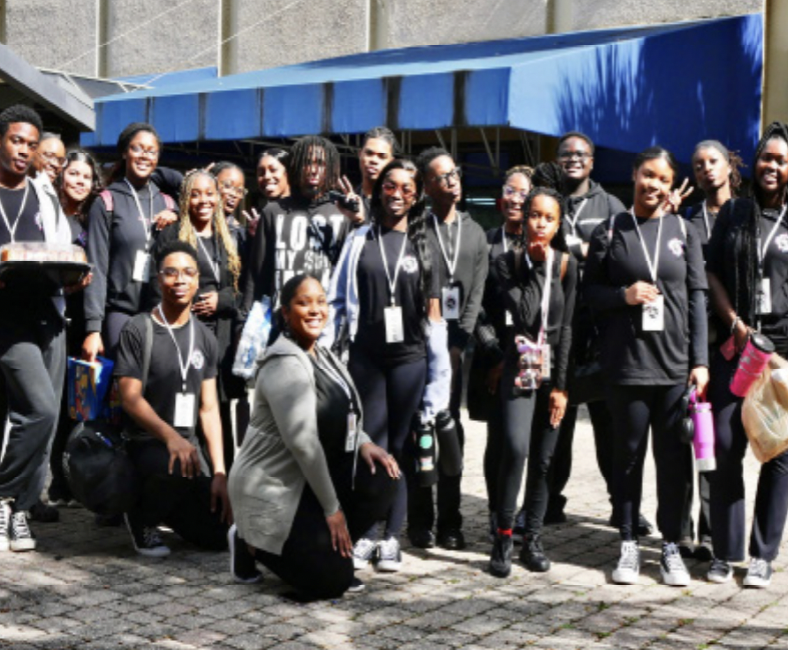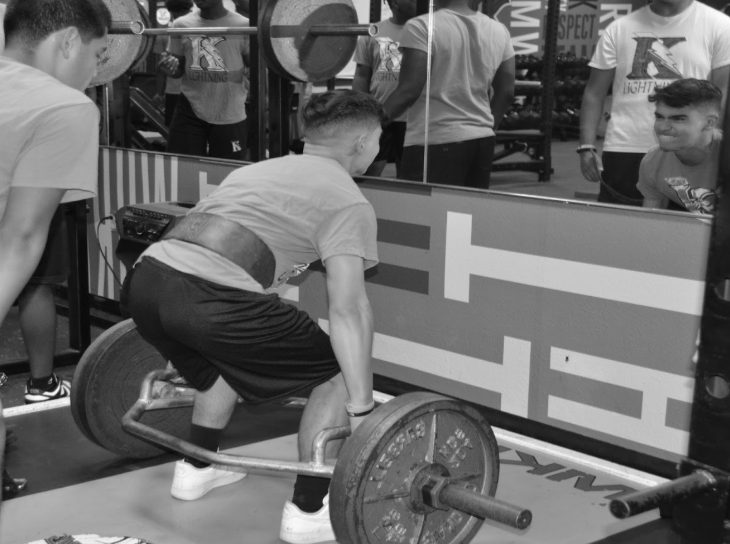Tucker Breier: Jewish, transgender and proud
“A piece of string walks into a bar and the bartender says, ‘We don’t serve pieces of string around here, get out.’ So the piece of string leaves, messes up its edges, walks back in and sits down. The bartender goes, ‘Hey aren’t you that same piece of string I saw earlier?’ and the string replies, ‘No, I am a frayed knot.’”
Tucker Breier’s eyes look at me curiously, waiting for me to understand his joke. Once I do, he laughs with me and his eyes tell me that this is something he enjoys and gets to do often.
Tucker Breier is funny. Tucker Breier is a senior at our school who hopes to study environmental sciences. Tucker Breier likes to paint, and he is actually pretty good at it. Tucker Breier is Israeli. Tucker Breier has a chronic illness. And Tucker Breier is transgender.
Breier was born in Jerusalem and moved here at just 6 months old “with no accent or passport” as he jokingly mentioned. He was also brought up Jewish ultra-Orthodox.
“I was raised to be in a family where a girl’s job is to take care of the family,” Brier said. “You don’t go to college, you have to only wear skirts, no short hair, no makeup, skirts have to be below the knees, the highest pinnacle of Orthodoxy. I didn’t really get to question anything.”
For a long time, Breier also went to an all-girls school. Here, he participated in a school play where he had to play a boy. Breier recalls how good he felt while wearing pants and his hair back.
This was only one moment of realization in Breier’s journey to coming out as trans when he was 15 years old.
When he was around 12, one of his friends came out to him as bisexual, which prompted Breier down a rabbit hole of questions and answers about the LGBTQ+ community and gender identity.
“At first, I was like, ‘Man, that’s really cool. I wish I was trans.’ And then it took me a full year to realize a symptom of being trans was wanting to be trans,” Breier said. “I didn’t even know what my gender identity fully was. I just knew that I definitely was not a girl.”
It was around this time that Breier started wearing a binder, which is not only a garment meant to suppress the breasts, but also the catalyst for Breier’s coming out to his mom. During a trip to the mall, Breier’s mom noticed his binder and prompted him about whether or not he wanted to be a boy, to which Breier answered that he did. And that is where his transformation began. He got a new haircut, a new wardrobe and started seeing a gender therapist. A gender therapist helps with the mental and psychological part of transitioning as well as with dysphoria. According to the American Psychiatric Association, dysphoria refers to “incongruence between one’s sex assigned at birth and one’s gender identity.” While regulations vary per doctor, in a lot of cases, seeing a therapist is a required step to legally transition or get any gender-affirming surgeries. Other transition requirements include, for example, living as your assigned gender for at least six months.
However, wearing a binder conflicted with another part of his identity. Breier was born with Ehlers-Danlos syndrome, a genetic condition that affects his joints and makes them extremely flexible, which can result in painful backaches. Because of his condition, he could not wear his binder for too long since it would result in pain and breathing difficulties.
“It is harder to transition when you have a chronic illness,” Breier said.
However, because of this condition, Breier was able to get top surgery faster. Top surgery refers to the removal of breast tissue, according to the Mayo Clinic, and it is also known as “masculinizing chest surgery.” Many trans males get top surgeries as a step into their transition, considering that for many it is a source of dysphoria.
“I went to a pain doctor a few years ago, because I was in so much back pain,” Breier said. “And she just looked at me and said, ‘How have you not gotten a reduction yet? I would say you need reduction because your back and your body cannot handle this.’’’
This gave Breier a medical reason to get a reduction and most importantly, a way to pay for it, considering that insurance usually covers breast reductions but not top surgeries, which can cost over $10,000. Additionally, in his experience, many doctors were hesitant to perform surgery on transgender people because they feel they are being tricked into performing a free mini top surgery. However, Breier had a positive experience.
“I walked into his office, and we were discussing my reduction. And my mom said, ‘Actually, he’s trans and we’re hoping to get top surgery at one point.’ And my surgeon was like, ‘That’s even better. I do top surgeries all the time,’” Breier said.
And that is how during the summer of 2020, Breier was able to get top surgery.
“It’s just such a transformative experience that I can’t even describe,” Breier said.
During his journey, Breier was able to find support in his religion, the same one that had made him feel isolated years prior – especially in Keshet, an organization dedicated to fighting for LGBTQ Equality in Jewish life. Breier even went to a weekend getaway with the organization and recalls feeling validated by the rabbis who offered their own accepting interpretation of the Torah and the people who surrounded him, who were Jewish and also trans.
“There is a synagogue down south in Miami Beach that I go to sometimes that has a trans rabbi. And it took a long time but I realized that, in actuality, the whole Torah is just so up for interpretation,” Breier said. “And the original text is actually very loving.”
I asked Breier what is something he wished more people knew about the trans experience. His answer is one that we can all learn from.
“I wish more people knew how much it’s not just wanting to be a different gender. It’s a whole process of identity. It’s not a quick, overnight like, ‘maybe I’ll be trans tomorrow.’ It’s definitely not an attention-seeking thing,” Breier said. “I think the most important thing is learning how to talk to someone who’s trans because it’s either very rude and very condescending. Like ‘What’s in your pants?’ or like, ‘How do you have sex?’ Those are not questions you ask anyone else, please. Mind your business just a little bit. It’s not that important. And ask people their pronouns.”
According to the Trevor Project, trans youth is at a higher risk of committing suicide, suffering from depression, and being scared to go to school. Trans rights are human rights and if you want to learn more please refer to the links below:
Get the Facts About Trans Youth Infographic (https://www.lgbtmap.org/file/Advancing%20Acceptance%20Infographic%20FINAL.pdf)
Trans Key Stats
(https://www.stonewall.org.uk/sites/default/files/trans_stats.pdf)
Transgender Children & Youth: Understanding the Basics
(https://www.hrc.org/resources/transgender-children-and-youth-understanding-the-basics)





























